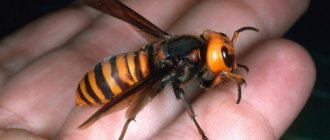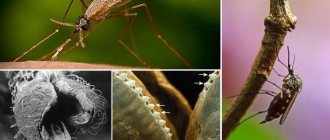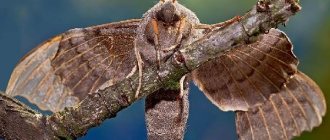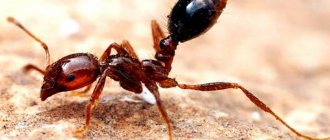Plants » Flowers
1
4343
Article rating
Kira Stoletova
Indoor phalaenopsis have long become habitual inhabitants of houses. The plant pleases with long and abundant flowering, so it is loved by flower growers. A white coating on the leaves of an orchid indicates a serious disease of the flower.
What to do with white bloom on orchids
Reasons for the formation of white plaque
Measures to combat white sticky plaque on an orchid require an understanding of the nature of its appearance. The method of treatment will directly depend on this. The most common causes are powdery mildew or mealybug. The following errors in care are factors for the development of these ailments:
- lack of sunlight, especially in winter;
- excessive substrate moisture;
- lack of fresh air in the room, impaired microcirculation;
- incorrect temperature conditions;
- infected soil;
- untimely removal of the remains of fallen leaf blades.
When growing an orchid, it is important to follow the basic rules of caring for the crop, as well as to carry out preventive irrigation on time.
Expert advice on caring for orchids with active guttation
Among the recommendations for caring for “crying” orchids, you can often find advice to wash the leaves of the plants with a shower. According to expert plant growers, this should not be done:
“Showering increases humidity and further stimulates guttation. Of course, it is better to get rid of sticky droplets on the leaves so that sooty fungus or more dangerous infections do not settle on them. But this must be done carefully, wiping the orchids with a slightly damp cotton pad.”
A. Davydovskaya, owner of the greenhouse, candidate of biological sciences
To reduce the manifestations of guttation, you need to normalize the air temperature and illumination of the orchid. The daily difference should not be more than 5-8 degrees, and daylight hours must be increased with the help of additional lighting.
Sticky drops on orchid leaves are a natural physiological reaction to certain environmental conditions. This does not require special measures or complex care. Simply removing the discharge is enough to prevent possible infections.
The harmful effects of white plaque on an orchid
Regardless of the reason for the formation of white plaque on the orchid, the plant suffers greatly. If certain measures are not taken in time, it will die. When the orchid leaves become covered with a white sticky coating, photosynthesis slows down and then stops altogether. For any plant, this means a violation of proper development, namely: deformation, destruction of plant cells and tissues, and death of the affected areas occurs.
If the cause of plaque formation is a mealybug, then the plant is affected by larvae that secrete liquid. This liquid is a favorable environment for the development of putrefactive microorganisms. All these factors gradually lead to the death of the affected specimen.
The speed of spread of the disease largely depends on how quickly the owner takes action, that is, pruning, isolating the plant, treating it, and most importantly, providing competent care and correcting errors in maintenance.
The presence of a white coating on orchid flowers indicates that the plant is heavily affected by mealybugs. The insects attacked the crop so much that they managed to get to the buds. In this case, urgent removal of the scale insect with a cotton swab or swab will be required. This must be done carefully so as not to damage the delicate petals. Further more serious processing will be required.
White mold can also appear as a result of improper watering.
Owners should maintain a proper balance between watering, room temperature and humidity. If these indicators are violated, the appearance of mold will not be long in coming. It is no less dangerous than other orchid ailments and can lead to its death.
Root rot
Cymbidium, Miltonia, and Paphiopedilum are more susceptible to root rot than other orchids.
If an orchid is affected by root rot, the leaves of the flower begin to turn brown, and the roots rot and become soft. Too high a temperature and high humidity are often factors that accelerate the development of the disease.
It is worth starting treatment by creating favorable conditions for keeping the orchid, since the disease most often occurs due to violations in care. If an orchid is damaged by root rot, it is necessary to treat the roots and substrate of the plant with a solution of Fitosporin-M or the drug Trichoderma Veride, according to the instructions. To achieve a positive effect, it is advisable to carry out the procedure 3 times with an interval of 10-14 days. The easiest way to carry out the treatment is by immersing the pot in the solution.
When planting an orchid, you should use high-quality disinfected soil - this will be the best prevention of root rot.
Powdery mildew
Signs of powdery mildew are a coating that resembles flour or powder. It has been noticed that at an early stage of infection, this pollen can be easily removed with a napkin. As the disease progresses, the powder becomes like a dense patch of felt. Dark dots appear inside - hearth bodies with fungal spores. When they finally ripen, wet droplets appear that resemble dew. If you carefully examine the leaf, its tissue under the stain has ulcerations. This is how the fungus affects the orchid.
The disease spreads very quickly. Treatment of the white sticky coating on the orchid should begin immediately. Otherwise, the disease will begin to spread from the leaf blades to the stems, flowers and root system of the plant. Spores are carried by air, water and insects.
How to treat the disease?
If you notice signs of infection in your orchid, immediately disinfect the plant:
- Remove all flower stalks (regardless of whether they have lesions or not).
- Dissolve 15 ml of liquid soap in a liter of clean water and mix well.
- Using a cotton swab, wipe the plant with the soapy mixture, carefully removing any insects visible on the leaves and stems.
After this procedure, quarantine the plant for several days. Watch him. If its condition has not worsened, return the orchid to its original place and pay more attention to caring for it.
Important! In case of fungal infection, you need to transplant the orchid into a clean substrate and a new pot. After removing the plant from the old container, you need to rinse all the roots with warm water (+35 degrees), and remove the diseased parts. In case of infection, you need to soak the root system in a fungicidal solution for 15 minutes.
Chemical and biological agents
Pest control is in many cases more difficult than fungus control. The mealybug clings to its territory and will not leave it so easily.
The most effective drugs that can kill the parasite are:
- Fitoverm;
- Bankol;
- Mospilan;
- Aktara.
All of the listed insecticides fight both adults and larvae. After treating the plant with the preparation, close it with a plastic bag and leave for 25–35 minutes. This will help enhance the effect of the product. Do not carry out treatment in a room where someone lives: take diseased plants outside or at least to an uninhabited balcony.
Observe precautions when working with chemicals: protect all exposed areas of the body, face, eyes from accidental contact with the composition, do not drink, smoke or eat while processing plants.
Treatment with traditional methods
Traditional recipes will help cope with pests only in the initial stages of disease development. Don’t expect magical results from them if the parasite has already captured more than 50% of the flower.
The most effective means:
- Garlic infusion. Take 5 garlic cloves, pour 1 liter of boiling water and leave for a day. Strain the finished mixture and treat the affected areas of the flower with it.
- Onion infusion. Peel and chop one medium-sized onion. Fill the raw materials with warm purified water, leave the mixture to infuse for 2-3 hours. Strain the broth and spray the orchid with it.
- Pepper infusion. Take 50 g of hot pepper, pour 500 ml of boiling water over it, then place on the stove and boil for 5 minutes. Cool the finished mixture and strain. Treat the diseased plant with the decoction.
What to do with whiteheads?
The only possible method of getting rid of white sunken spots or white dots on an orchid is careful care:
- normal watering mode;
- timely treatment of pathologies.
If you monitor the condition of your orchid, the consequences of the disease will soon disappear.
Mealybug
These parasites are the most dangerous for orchids. They are quite small and look like white dots. If you look at this stage, then a white cotton fiber with some tubercles will appear, which are scales. Another sign of a parasite attack is sticky drops. It is in them that rot develops. The insect is actively developing. The fast colonizes the leaf plate, and then moves to the roots of the orchid, forming the same white coating.
What is the danger to the plant?
A white coating formed for any of two reasons causes quite serious trouble for the orchid. Powdery mildew mycelium, feeding on the juices of the flower, tightens the leaf blade, thereby complicating the process of photosynthesis - hence:
- Weakening of the plant;
- And slowing down its growth.
White plaque slows down the growth of the orchid.
You can see above what powdery mildew looks like in the photo. Sufficiently strong development of the fungus leads to :
- Tissue destruction;
- Formation of holes;
- Deformations;
- And the death of the affected parts.
The mealybug and its larvae not only inhibit the development of the orchid by sucking out its juices. Insects secrete a sticky liquid, which is a fertile environment for putrefactive fungi . A specimen affected by pests may eventually die from rot.
Preventive actions
To avoid powdery mildew and mealybug attacks, you need to take some precautions:
- It is extremely important to provide the plant with proper care - watering regime, fertilizing, create a favorable microclimate and location in the room;
- carry out preventive spraying on time;
- each purchased copy must undergo quarantine;
- When replanting the plant, good drainage will be required.
We must not forget about regular inspection of not only orchids, but also other indoor plants that can become a source of infection.
What to do with burns?
The spots may be the result of burns. There are several types:
- thermal;
- solar;
- chemical.
Thermal and sunburns are expressed in light and dry formations. They appear after prolonged exposure to direct sunlight or being indoors at high temperatures.
If the spots are large, damaged leaves should be trimmed. For minor damage, the plant can be saved by frequently spraying the plates with cool water.
A darker, gray color is an indicator of serious problems and poisoning of the orchid.
Chemical burns occur after exceeding doses of fertilizing or using inappropriate fertilizers. The only way to save a flower is by replanting it in new soil.











